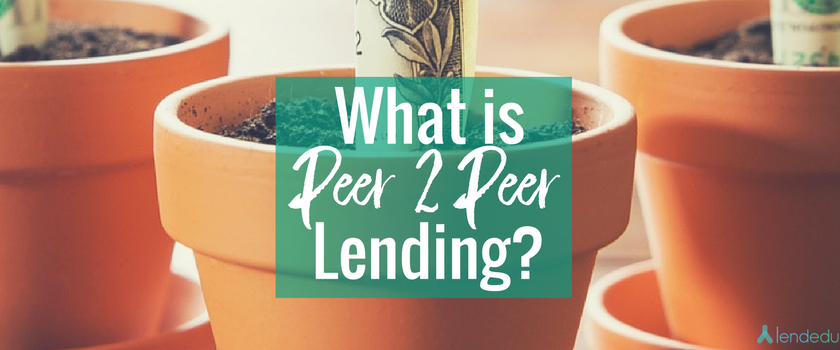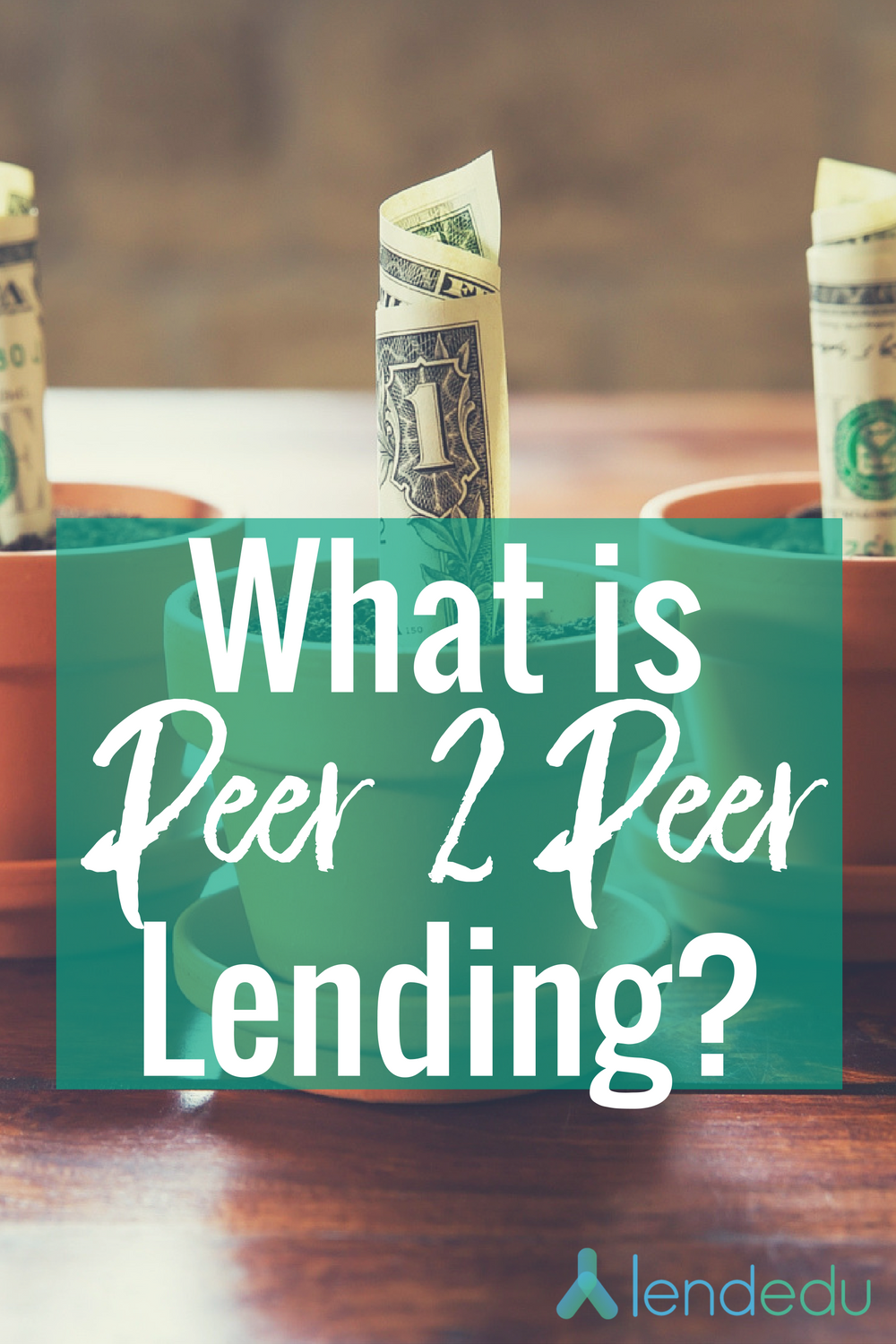
Banks stay in business by charging more interest on the loans they make to borrowers than what they pay in interest to the investors who deposit their money with the bank. However, the recent rise of P2P lending in online marketplaces is eliminating the bank as a middleman and connecting individual investors directly with individual borrowers.
Most P2P lending is done through websites, like LendingClub or Prospe?r, which collect either a flat fee or a percentage fee of the loan in exchange for connecting the parties together. The sites also typically run credit check services or perform other tasks and provide a medium through which P2P borrowers can make their payments to investors.

By eliminating the financial institution, investors can receive more money in interest while borrowers actually pay less for their loans. This is a win-win for all involved, as long as everything goes according to plan. However, P2P lending comes with greater risk for the parties involved than traditional lending with financial institutions. For instance, if a borrower defaults on a loan, the corresponding investor’s money might be lost permanently, leaving the investor with little practical recourse.
Some P2P lending websites are alleviating this risk by providing loss protection that operates like insurance for their investors. When a loan defaults, the investor is paid back fully or partially from a fund set aside and maintained by the third-party website for that purpose.
Borrowers, on the other hand, need to be careful that they are using reputable online companies with which to conduct their business and facilitate their loan applications. This is important because of a heightened risk that their privacy could be breached and their personal information made known publicly or to the site’s investors.
Since investors’ money and risk of loss is directly tied to an individual borrower, it could present the borrower with an unsafe situation if they were to default on a loan with their identity or personal details known. The fact that some P2P lending sites ask borrowers to share their personal stories, so that investors can pick and choose who to invest with, increases this risk. The chances that a borrower will share their personal reasons in applying for the loan increase when using unsecured loans.
Most P2P loans are unsecured, but some sites facilitate secured loans as well. An unsecured loan is one offered without the borrower having to put up collateral, such as real estate, art, business assets, or other things of value. An unsecured loan offers no collateral and usually requires the borrower to have a better credit rating than they would get for a secured loan.
Typically, investors making an unsecured loan will more closely scrutinize a borrower’s credit history and reason for taking out the loan. Many P2P lenders also offer investors a chance to learn details about the borrower, including what the loan proceeds will be used for. While the majority of P2P loans are made for purposes of debt consolidation, business lending is also on the rise.
Furthermore, some investors are looking beyond credit scores to find borrower life stories that intrigue and inspire them. In a very real way, P2P lending is making borrowing personal. If you browse borrower backstories on various P2P lending websites you’ll see people hoping to obtain loans for everything from paying their rent, to opening a new small business, to getting surgery.
However, not all investors consider personal stories, and some say that P2P lending has been “infiltrated” by the big banks and financial institutions that it was originally intended to replace. Many CEOs and other employees of large financial institutions hold stock and invest in the two largest and well-known P2P lending websites: Prosper and LendingClub. And in some cases, the big financial institutions are signing up directly as investors, and making loans to borrowers who apply.
There is some concern in recent years that, as a result, true individual investors are being crowded out of the P2P market and losing out on the safest investments, leaving only high-risk borrowers that big banks aren’t interested in. However, as P2P lending flourishes and becomes increasingly mainstream, websites that offer it will continue to grow and opportunities for both investors and borrowers are sure to continue.

6 comments